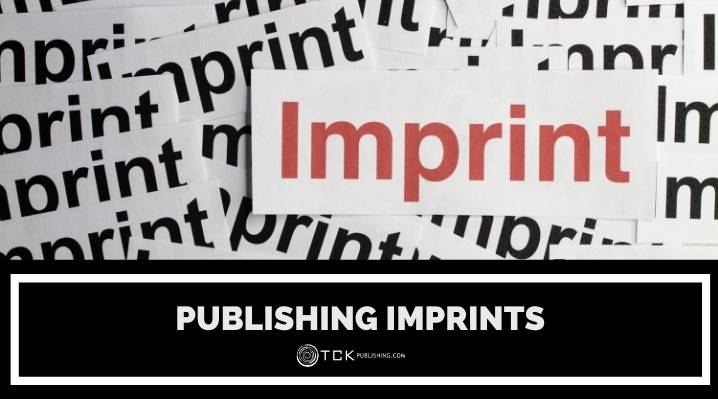
Whether you’re an avid reader or aspiring author, you may have heard of publishing imprints, or seen their logos on the backs of your favorite books.
But there’s a good chance you’ve never given much thought to what publishing imprints really are or why publishers use them.
In this post, we’ll demystify the purpose of publishing imprints, how they’re used, and how self-published authors can create their own.
What Is a Publishing Imprint?
In the publishing world, an imprint is a trade name that a publisher uses to publish a book. A publishing company might have one or dozens of imprints, often using the different imprint names as brands to market different books to specific demographics.
In other words, the imprint is the name used to publish the book, but it doesn’t change the fact that the same publisher is behind the books.
For example, here at TCK Publishing, we recently launched two imprints: Musine for nonfiction, and Quilla Books for fiction. These are the names that will be listed as the publishers of these books, but all those books will still ultimately come from TCK Publishing.
Larger publishers tend to have many imprints. For example, Simon & Schuster currently has 35, while Penguin Random House has hundreds.
Why Do Publishing Houses Have Imprints?
So if imprints are just names that don’t really mean anything, why do publishers use them?
Imprints are primarily used as a marketing strategy. They help publishers establish different brand identities for cohesive lines of books, some of which might be aimed at specific market segments (for example, children’s books, graphic novels, etc.) Each imprint is also typically managed by a different team of editors.
As far as readers are concerned, imprints don’t matter a whole lot. (Can you name the publisher of your favorite book?)
But imprints might matter more to authors who want to be in the same imprint as other successful books and authors. Of course, this association can’t guarantee any book’s success, but it’s still something many authors might care about.
Self-Publishing Imprints
Traditionally published authors don’t have much choice in which imprint they’re published under, as that’s something the publisher decides based on a book’s genre or niche.
However, when it comes to self-publishing, authors can either use KDP or their own imprint.
If you want your ebooks to have an ISBN, you’ll need a name to register the ISBN with. That name could be your own author name, but it could also be any imprint name of your choosing. (This name does not need to be registered as a corporation or LLC).
Your publishing imprint name will be displayed to the public wherever you sell your book, in industry databases used by retailers and distributors, on your book’s copyright page, and as the name assigned to your ISBN. Learn more about how to get an ISBN number for your books.
Again, your imprint name doesn’t mean a whole lot, whether you’re traditionally or self-published. However, many self-published authors prefer to use an imprint name other than their own name, because using their own name makes it readily apparent that the book was self-published.
Publisher Imprints
Whether you’re working with a traditional publisher and have been assigned an imprint, or you’re self-publishing your book and want to create your own, keep in mind that the imprint name is ultimately just another name for the publisher.
What will ultimately impact your success more than an imprint name is writing an excellent book, so regardless of your publishing route or genre, make sure that remains your focus.
Did you find this post helpful? Let us know in the comments below!
If you enjoyed this post, then you might also like:
- Top 15 Publishers by Revenue: Who Earned the Most in 2021?
- List of 100+ Reputable Book Publishing Companies
- Traditional Publishing vs. Self-Publishing: Pros, Cons, and Tips for Success
- What Is Independent Publishing? The Pros and Cons of Indie Publishers
As a blog writer for TCK Publishing, Kaelyn loves crafting fun and helpful content for writers, readers, and creative minds alike. She has a degree in International Affairs with a minor in Italian Studies, but her true passion has always been writing. Working remotely allows her to do even more of the things she loves, like traveling, cooking, and spending time with her family.

Extremely helpful! Thanks.